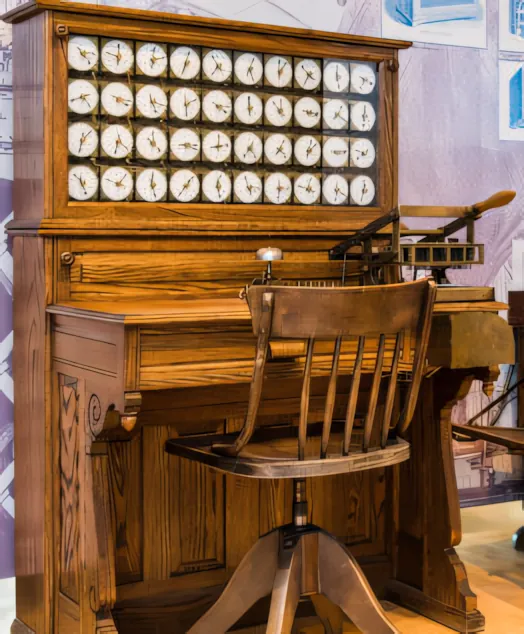Computational Age: Mechanization to Digital Analysis
Evolution of Computational Methods
The period from 1875 to 1950 revolutionized mean calculations through mechanical computation, laying the groundwork for modern statistical analysis. The introduction of mechanical calculators and tabulating machines transformed statistical analysis from a labor-intensive manual process into an efficient mechanical operation.
Moving Average Innovation (1885):
Simple Moving Average:
SMA = Σxᵢ/n, for i = (t-n+1) to t
Where n is the period length
Weighted Moving Average:
WMA = Σ(wᵢxᵢ)/Σwᵢ
Introducing time-based weighting
Mechanical Calculation Methods:
Hollerith's Method (1890):
Σ(card counts × values)/total cards
First automated statistical processing
Statistical Theory Advancement
Galton's Fundamental Discoveries (1886)
Galton's work fundamentally transformed understanding of statistical relationships through three key innovations:
Regression to the Mean
y = r(σy/σx)(x - μx) + μy
Demonstrated that extreme measurements naturally tend toward the population mean in subsequent observations
Correlation Coefficient
r = Σ((x - μx)(y - μy))/(nσxσy)
Introduced systematic measurement of relationship strength between variables
Regression Coefficient
β = r × (σy/σx)
Established mathematical framework for predicting related measurements

Key Contributors and Innovations
Established regression analysis and correlation theory:
Correlation Coefficient Method
Introduced mathematical framework for studying relationships between variables
Invented the tabulating machine for the 1890 U.S. Census:
Automated Statistical Processing
First mechanical system for large-scale data analysis
Developed small-sample statistics ("Student's" t-distribution):
t = (x̄ - μ)/(s/√n)
Enabled precise analysis of small samples
Created the Harvard Mark I (1944), the first large-scale automatic digital calculator:
Automatic Sequence Controlled Calculator
First implementation of automated sequential computation
Capable of complex arithmetic operations including means of large datasets
Key Innovations:
• Sequential operation control
• Automated data storage
• Program-driven calculations
Evolution of Specialized Applications (1875-1950)
Technological Innovations
Moving Averages (1875)
The development of systematic time-series analysis methods revolutionized financial forecasting through structured mathematical approaches to trend analysis. These innovations enabled the first rigorous analysis of market patterns and economic trends.
MA(n) = (P₁ + P₂ + ... + Pₙ)/n
Mechanical Computation (1885-1890)
The introduction of Burroughs' calculating machine and Hollerith's tabulating system transformed statistical practice by enabling rapid processing of large datasets. These innovations marked the transition from manual to automated statistical analysis, particularly evident in the 1890 U.S. Census.
Industry Applications (1920-1950)
Manufacturing Quality Control
The development of specialized means for process control revolutionized manufacturing quality assurance. Innovations included:
Control Limits = x̄ ± zσ/√n
Where z represents desired confidence level
Financial Analysis Evolution
Introduction of exponentially weighted averages enabled more sophisticated market analysis:
EMA = αPt + (1-α)EMAt-1
Where α represents the smoothing factor
Government Statistical Systems (1940s)
Implementation of automated calculation methods enabled comprehensive demographic analysis and policy planning, establishing the foundation for modern government statistics.
Historical Impact
The Computational Age marked the transition from theoretical to practical large-scale statistical analysis. Mechanical calculation devices removed the computational barriers that had previously limited the application of means to small datasets, enabling new applications in business, science, and government.
This era established the practical methods and procedures that would later evolve into digital statistical analysis, setting the stage for modern computational statistics and data science. The automation of mean calculations through mechanical and early electronic devices created the foundation for today's advanced statistical computing methods.